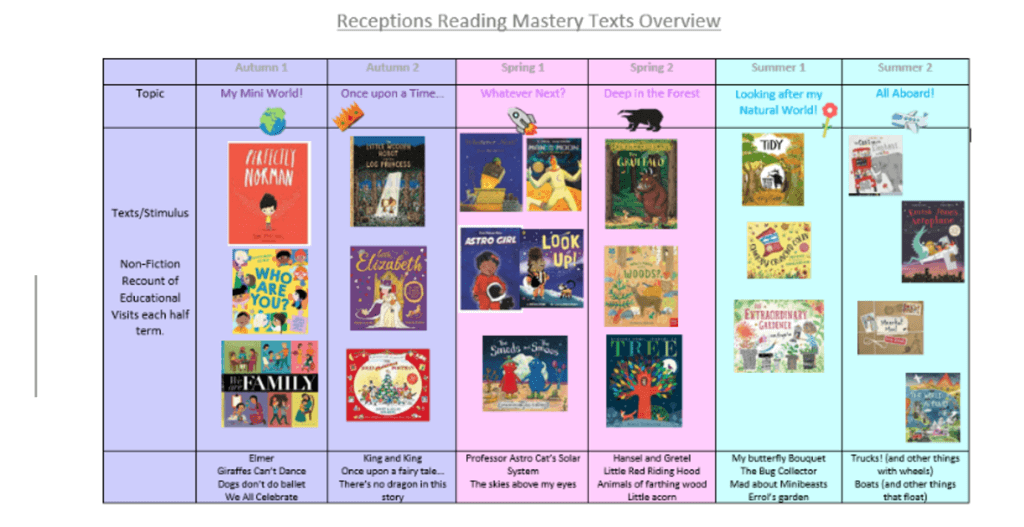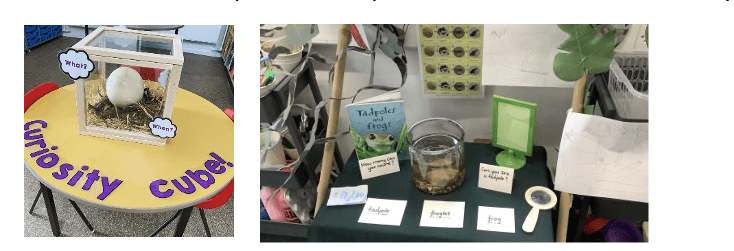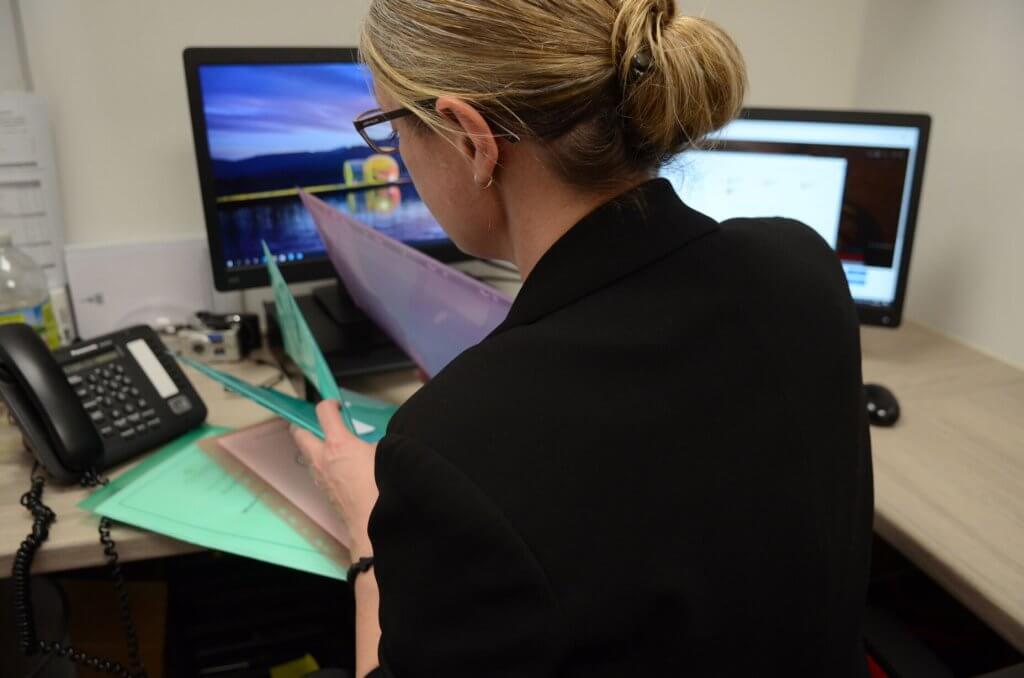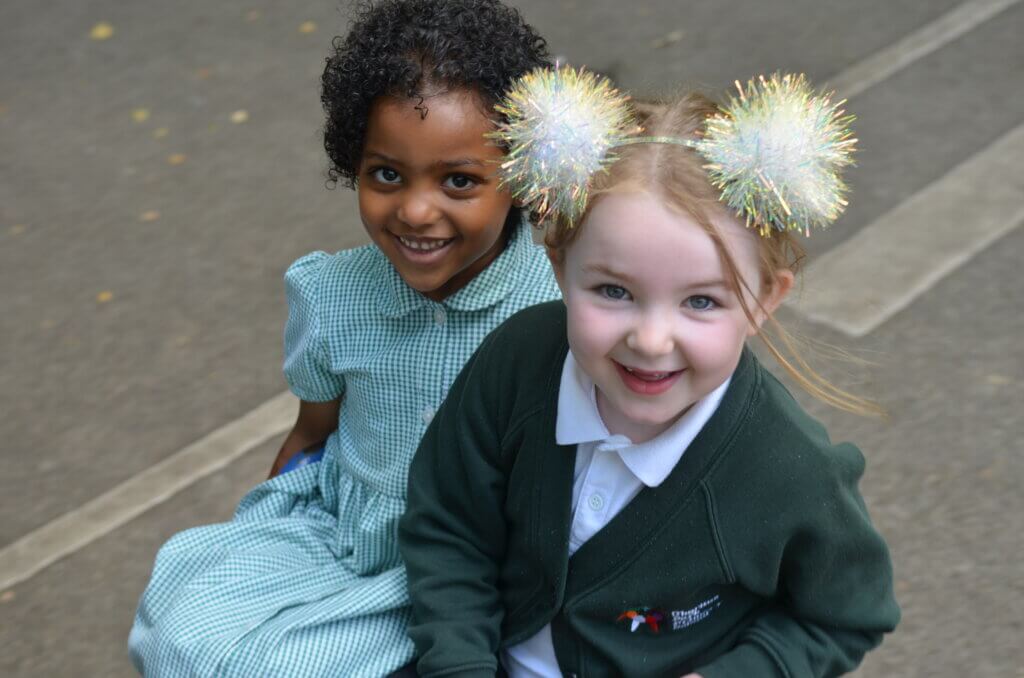Prioritising Communication and Language
We all know how vital and important it is that we prioritise Communication and Language in our EYFS. The EYFS Framework tells us so, EYFS experts tell us so, and Ofsted tells us so too. However, with the growing demand on our Reception children to be ‘Year 1 ready’ and to learn phonics so early on are we in danger of undervaluing and under-planning for communication and language rich learning opportunities by pushing children to ‘read and write’ ahead of what is developmentally appropriate?
At the recent North West Ofsted Big Conversation (NWOBC) this January, the Ofsted team reiterated the importance of Communication and Language and how settings, schools and adults who work within the EYFS sector, need to ensure the building blocks are created early on by carefully considering the curriculum we teach and how we teach it through quality interactions and environments. We will delve deeper into Ofsted’s messages and reflect on ways we can promote and improve the quality of communication and language in our EYFS.
Why is it so important we get it right early on?
Communication and language skills are not something children develop and tick off by the time they are 4 years old meaning they are ready for the harder work of learning to read and write. Arguably, communication and language skills are the continual thread that weaves together all areas of learning in our early years, continuing throughout education and into our adult life. Years of research supports that children’s communication and language skills are the greatest predictor of future academic outcomes and overall positive effect on wellbeing. The Early Intervention Foundation’s (EIF) report – Language as a child wellbeing indicator (2017) – reiterated that “early language acquisition impacts on all areas of a child’s non-physical development as it contributes to their ability to manage emotions and communicate feelings, to establish and maintain relationships, to think symbolically, and to learn to read and write.” Therefore, we need to make sure that our planning, play and provision we provide for the children will pave the way for the foundational skills needed to be successful communicators.
Planning – is the curriculum designed to meet children’s emerging communication and language needs?
Within the EYFS Framework the emphasis on developing children’s communication and language skills underpins the holistic development of a child. Through carefully planned and considered learning opportunities we need to nurture children on their unique learning journey. In order to do this effectively, we need to ensure that our curriculum design is centred around communication and language, putting it at the heart of how can we see communication and language opportunities rather than an afterthought. At the NWOBC, His Majesties Inspector, Kirsty Godfrey, reiterated this point explaining that our curriculum is the WHAT and our pedagogy is the HOW. For example: WHAT language do we want them to use? HOW will we expand their knowledge, understanding and vocabulary in context? She explained that if we do not carefully consider this within our curriculum planning and teaching then the word gap will emerge and continue to grow between those who do and those who do not have a wide vocabulary range, impacting on their access to future curriculums and learning. So, what do you need to consider?
• How much of your curriculum is designed to meet the children’s interests?
The long term EYFS curriculum needs to be planned out so that we can support our children to best make progress. For example, we know when a child can identify sounds in the environment, they are more likely to move onto identifying sounds in spoken language. When children have a fascination or interest in something they are likely to have more to talk about and therefore likely to engage in conversation. It is at this point we can capitalise and expand on their vocabulary, extend their sentence structures and provide them with further opportunities to communicate their knowledge and understanding. For example, if you have a group of children who are really into Paw Patrol then, depending on where a child is up to developmentally, you might use this as an opportunity to encourage children to identify sounds from Paw Patrol or initial sounds in the words associated with Paw Patrol. If the child is ready, you can expand their language and understanding further by exposing them to a wider range of quality books and experiences based around dogs generally, rather than being specific to Paw Patrol, so that their knowledge and vocabulary moves from being specific and becomes transferable to the world around them.

• Does your curriculum immerse children in high-quality books, rhymes and poems?
The EYFS Framework and The Reading Framework both stress the importance of children hearing a wide repertoire of stories, books and rhymes throughout their early years as we know this is where children acquire new vocabulary, language patterns and understanding. So, a great place to start is to look at your current curriculum and ask yourself which stories, books and rhymes support it? Do you share a wide range of books including non-fiction? Do children have access to these in provision? Multiple exposures to the same book and others linked to a topic or theme enhances the children’s vocabulary and language range as they make connections and apply this knowledge to their play and interactions. Below is an example of Irk Valley Community School’s (Manchester) diverse and inclusive Reading Spine with core and supplementary texts.

• Do you plan what vocabulary and sentence structures you want children to use?
In order to know what vocabulary, language and sentence structures children already have we need to listen to children communicating in the environment. What do they already know? How can I extend that? All children will developmentally be at different stages of their communication and language journey therefore it is important to consider what would you want your emergent communicators to be able to do and what would your more advanced communicators do. We need to ensure that our planning of vocabulary and language development mirrors our children’s emerging needs. For example, if we think about planting seeds and observing growth, for some children we may want them to know and label what they can see: seed, roots, stem, leaf and flower, whereas other children may already have this vocabulary range and therefore we need to extend this with more precise vocabulary to describe the stages of growth e.g. seedling, shoots. Then, consideration can be made about the vocabulary range that could be used to describe, e.g. small, taller, delicate and how to incorporate this language into sentence structures. For some children, this may be simple commenting on observations, ‘The seed is in the soil’ whereas for others ‘We push the seeds deep in the soil _so birds and squirrels can’t eat them up._’ By generating lists of vocabulary you want different groups of learners to know and use and considering how they may use this language to communicate their thoughts and ideas, it will ensure ALL children are developing the appropriate communication and language skills they need to progress.
Play – the role of the adult and quality interactions
The role of the adult is crucial to supporting a child’s communication and language development. The EEF’s research around improving literacy and how to support oral language development stresses the importance of quality over quantity of interactions. It emphasises the need for children to receive the right level of language support from staff who have a deep understanding of how language develops and can therefore adapt their interactions to suit the needs of all children.
When children play they are deciding on areas within the environment that interest them the most, they are likely to have their own ideas and views and therefore more likely to engage in talk and conversation with peers or adults. It’s in these moments that adults need to capitalise on engaging with high-quality interactions with the children. Therefore, we need to make sure that the role of the adult in provision is simple: play and interact! Too often, when I spend time in different early years settings, do I hear adults asking children closed questions,
Too often, when I spend time in different early years settings, do I hear adults asking children closed questions, Adult: ‘What have you found?’ Child: ‘a stick’ Adult: ‘Where did it come from?’ or ‘What are you going to do with it?’ Prompting the child each time to only give one- or two-word responses, however, if we turn this into an open-ended prompt for discussion, Adult: ‘Tell me about what you found’, allows the child to share their experience and starts the conversation. The adult could then help the child to develop their imagination and creativity whilst exploring vocabulary further. ‘How many things could we think of to use the stick for?’
Naturally, as adults, we resort to asking questions when we are not sure of the answers. We don’t know what the child is going to say so instead we bombard them with lots of questions to try and find out but this isn’t an effective way of supporting children’s language development and by changing up the way we open up conversations allows for higher quality and deeper connections to be made resulting in children’s vocabulary to be expanded, ideas to be elaborated and further learning to take place.
Check out the EEF’s Supporting Oral Language Development Tool to help improve the quality of adult interactions in your setting.
Provision – the language-rich environment
The environment is where the magic of play and learning takes place and we know with carefully planned and considered provision you are inviting children to communicate with others and expand on their vocabulary, language and knowledge. At NWOBC, Kirsty Godfrey reminded us that beautifully curated activities and areas of provision are not enough if language development opportunities have not been planned for, or, adults are not within the areas scaffolding and extending language. She added that those who are less advantaged will flounder in these spaces whilst more advantaged children will continue to flourish due to the transferable vocabulary and knowledge that they have already secured through previous experiences. This is a reminder that our environments and provision are only effective when adults consider opportunities for children’s language when an adult is not there, or when they are actively involved and engaged with children in play! So, what can we do to make sure our environments are truly language-rich?
• Do all areas of provision encourage language development?
Start by reviewing all your areas of provision asking yourself, ‘How does this support communication and language development?’ From this, you can consider with the team what vocabulary and language you would expect to hear children using in their play and how might they model and scaffold this? If certain areas are limited or restricted in the communication and language opportunities they provide, then consider how this could be opened up further? Do you need to spend time observing children in play in this area to know what next? Do you need to add more open-ended and ambiguous resources to prompt deeper conversations? Do you need to model the language or provide opportunities for children to acquire the knowledge needed to progress?
Play – the role of the adult and quality interactions
The role of the adult is crucial to supporting a child’s communication and language development. The EEF’s research around improving literacy and how to support oral language development stresses the importance of quality over quantity of interactions. It emphasises the need for children to receive the right level of language support from staff who have a deep understanding of how language develops and can therefore adapt their interactions to suit the needs of all children.
When children play they are deciding on areas within the environment that interest them the most, they are likely to have their own ideas and views and therefore more likely to engage in talk and conversation with peers or adults. It’s in these moments that adults need to capitalise on engaging with high-quality interactions with the children. Therefore, we need to make sure that the role of the adult in provision is simple: play and interact!
Too often, when I spend time in different early years settings, do I hear adults asking children closed questions,
Adult: ‘What have you found?’
Child: ‘a stick’
Adult: ‘Where did it come from?’
Prompting the child each time to only give one- or two-word responses, however, if we turn this into an open-ended prompt for discussion,
Adult: ‘Tell me about what you found’, allows the child to share their experience and starts the conversation.
The adult could then help the child to develop their imagination and creativity whilst exploring vocabulary further. ‘How many things could we think of to use the stick for?’
Naturally, as adults, we resort to asking questions when we are not sure of the answers. We don’t know what the child is going to say so instead we bombard them with lots of questions to try and find out but this isn’t an effective way of supporting children’s language development and by changing up the way we open up conversations allows for higher quality and deeper connections to be made resulting in children’s vocabulary to be expanded, ideas to be elaborated and further learning to take place.
Check out the EEF’s Supporting Oral Language Development Tool to help improve the quality of adult interactions in your setting.
Provision – the language-rich environment
The environment is where the magic of play and learning takes place and we know with carefully planned and considered provision you are inviting children to communicate with others and expand on their vocabulary, language and knowledge. At NWOBC, Kirsty Godfrey reminded us that beautifully curated activities and areas of provision are not enough if language development opportunities have not been planned for, or, adults are not within the areas scaffolding and extending language. She added that those who are less advantaged will flounder in these spaces whilst more advantaged children will continue to flourish due to the transferable vocabulary and knowledge that they have already secured through previous experiences. This is a reminder that our environments and provision are only effective when adults consider opportunities for children’s language when an adult is not there, or when they are actively involved and engaged with children in play! So, what can we do to make sure our environments are truly language-rich?
· Do all areas of provision encourage language development?
Start by reviewing all your areas of provision asking yourself, ‘How does this support communication and language development?’ From this, you can consider with the team what vocabulary and language you would expect to hear children using in their play and how might they model and scaffold this? If certain areas are limited or restricted in the communication and language opportunities they provide, then consider how this could be opened up further? Do you need to spend time observing children in play in this area to know what next? Do you need to add more open-ended and ambiguous resources to prompt deeper conversations? Do you need to model the language or provide opportunities for children to acquire the knowledge needed to progress?
· How is my classroom designed to promote social interactions and conversations?
Consider the layout and design of your environment. Does it promote social interactions? If you know certain areas are social hotspots then make sure the space is large enough to facilitate more children interacting in this area. Low-level or rounded tables are excellent for encouraging children to converse. Some of the best chats I have heard in early years are around the snack table when children are talking freely about their interests. Think about the positioning of some tables and activities – if they are pushed up against a wall or hidden away in a corner they are less likely to encourage interactions as practically this is difficult to achieve.
· How do I immerse stories, rhymes and songs into provision?
Like I mentioned before, fully immersing children with stories, rhymes and songs when they are playing in the environment is a really effective way of encouraging children to apply the learnt vocabulary and language structures in their own play. Areas of provision such as small world, roleplay and reading nooks are perfect spaces for children to re-enact the learning. However, stories, songs and rhymes can apply to all areas of provision and when children see this immersion they are learning early on the value of stories and books. Read my previous blog about Nursery Rhymes for handy hints and tips to get more nursery rhymes into your provision!
• Do the resources I provide stimulate talk opportunities?
A really effective way to get children talking more is to provide areas within the provision that are interesting and intriguing! This can be achieved by introducing Curiosity Cubes or Investigation Stations with open-ended questions or thoughts for children to share and express. This not only allows you to understand children’s prior knowledge and vocabulary range but also sparks that awe and wonder that is so special and unique to observe in children in their early years!

There is so much more that can be explored within Communication and Language but we hope it reignites and revives your faith in putting Communication and Language at the heart of all you do in EYFS. We know that when this is prioritised, children will go on to have future success in learning and in life.
What Next?
For support with Communication and Language in Early Years, Oracy across the Curriculum or Speech and Language Therapy please contact our Head of Educational Development jo.gray@oneeducation.co.uk in the first instance.
















